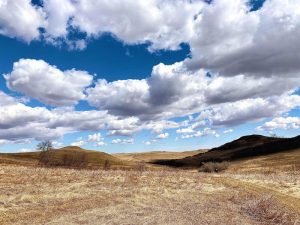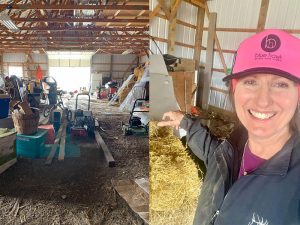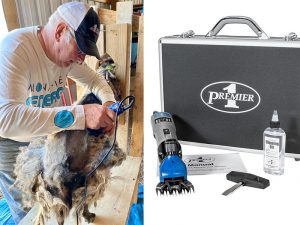Before you decide to get a herd of goats, you need to think about what your herd will need. Here are six things you will need to prepare before your goats arrive!

Water
Goats need fresh water that is easy to access. So you will want to make sure you have a water source nearby.
Another thing you will want to consider is your climate. North Dakota is known for its extreme winters. We installed a double auto-waterer brand name, the Jug. One side is for the does/dams, the other for the bucks/sires. It has served us by keeping the water liquid in below-zero North Dakota temps.
Food
Goats are browsers. They feed on shrubs, trees, weeds, and grasses. You will want to have access to areas where they can graze. If they are kept in containment with no access to vegetation areas, then they need grain/goat pellet feed.

Pastures need to be available and accessible. Hay and pellets need to be easily purchased.
Shelter
Goats need shelter from the elements, depending on their climate. They need to be dry. In cold conditions, they need to be able to get warm by nestling in dry, clean, deep straw. Our pole barn needed to be re-arranged and de-cluttered before we brought our herd home. We installed an inside pen and added additional shelters to accommodate girl/boy arrangements (does/dams and bucks/sires). We also needed to find a source to purchase straw for bedding. .
.
Containment
Goats need to be contained. You don’t want them in your garden or jumping on your vehicle. Woven wire fencing – 4’ high with an electric wire running across the bottom or top is best.
If your goat is horned, you do not want the large woven openings, as your goat will get its head stuck in the fence. If using t-posts to secure the fence, keep the t-posts as close as 6-7’ spacing. A goat will put its front hooves on the fence to lean up to the edge to come to see you. Once a goat can make an indent in that woven fence, the goat will soon make a step ladder out of the fence.

Fence material needed to be ordered, and we needed to put up a basic pen and main area before we came home with the herd. We learned that renting a post-hole installer is better than installing the posts by hand! A few good friends helped us install the fencing. We feed our crew that afternoon with a big meal. We are forever grateful for all their help and encouragement!
Health Routine
It is very important to create a health routine that includes hoof trimming and vaccinations with good record keeping. We learned how to trim a goat’s hooves by watching videos. YouTube is a great resource. When it came to vaccinations, we needed more hands-on training. That is where we leaned on the breeder we purchased our first four goats/kids from. She showed us how to do the vaccinations and supervised us while we tried them.
We were gifted a hoof trimmer by the farm that sold us our mature does.
Shears
Fiber goats need shearing. The Pygora breed is typically sheared two times a year.
You will want to secure them by placing them on a stand called a stan. YouTube was critical again when we had to shear the mature does, which happened to be the day after we arrived home. We purchased the only shearer on hand from our local farm store. It was not long before we bought our professional shearing equipment that made shearing so much more doable.
